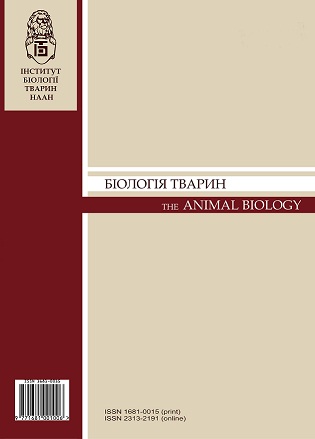

 | Наукова періодика України | 
| Біологія тварин |
Marien H. Survey on the course of puerperium and on fertility after implementation of the iVET® birth monitoring system in heifers / H. Marien, N. Gundling, W. Hasseler, M. Feldmann, G. Hennigsen, K. Herzog, M. Hoedemaker // Біологія тварин. - 2019. - Т. 21, № 2. - С. 42-45. - Режим доступу: http://nbuv.gov.ua/UJRN/bitv_2019_21_2_12 The aim of this study was to investigate the influence of the birth monitoring system iVET on the puerperium, milk yield and fertility of the dam in the subsequent lactation. On a large dairy farm in Saxony - Anhalt, the visual birth monitoring of the heifers was complemented by the automated iVET birth monitoring system. The iVET consists of two components: a transmitter, which is inserted into the vagina of the animals to be monitored and a receiver which must be installed above the calving pen. During the birth process, the transmitter is forced out of the vagina and sends a signal to the receiver which then triggers an SMS or phone call to the person in charge. In the control group (n = 192), birth monitoring was performed by farm personnel in the same way as before the start of the study. In the iVET group (n = 167), a distinction was made between the animals in which the transmitter remained longer (24 h + group, n = 88) or shorter than 24 hours (24 h - group, n = 79). The experimental phase started with the recording of the calving process and ended at day 200 p.p. To assess the heiferіs fertility, the onset of ovarian activity was determined by ultrasound examination of the ovaries. The following fertility measures were calculated: first service conception rate (FCR), overall pregnancy rate (PR), mean pregnancy index (PI), conception rate (CR), mean interval from calving to first insemination (CFI), mean days open (DO), mean interval from first insemination to conception (FIC), mean calving interval (CI). In the iVETі group, significantly fewer animals calved without assistance and there were significantly more calvings with extreme difficulty especially in the 24 h + group. The iVET group had a significantly higher number of injuries, the injuries were more severe, the healing progressed more slowly and these animals developed an endometritis significantly more frequently than the control group. In the control group, significantly more animals had active ovaries when they were first examined on Day 10 p.p. than in the iVET group. The iVET group had a signifianty longer CFI, but a significantly shorter FIC than the control group. Concerning the other fertility measures, there were no significant differences. In the 24 h + group, the milk yield of the first 100 days p.p. was significantly lower than in the 24 h - group, but there was no significant difference between the 100-d-yield of the iVET group and the control group. The number of animals which had to be culled before Day 200 p.p. was significantly higher in the iVET group than in the control group. Birth monitoring by means of the iVET system impaired the course of labour and in consequence the puerperium. The evaluation of calving ease and the examinations during puerperium showed that a retention time of transmitters in heifers of more than 24 hours cannot be recommended. This limitation makes the use of the birth monitoring system problematic; under real-life conditions it is hardly possible to predict the beginning of birth with sufficient accuracy with an acceptable amount of effort. Цитованість авторів публікації: Бібліографічний опис для цитування: Marien H. Survey on the course of puerperium and on fertility after implementation of the iVET® birth monitoring system in heifers / H. Marien, N. Gundling, W. Hasseler, M. Feldmann, G. Hennigsen, K. Herzog, M. Hoedemaker // Біологія тварин. - 2019. - Т. 21, № 2. - С. 42-45. - Режим доступу: http://nbuv.gov.ua/UJRN/bitv_2019_21_2_12. |
|
|
Всі права захищені © Національна бібліотека України імені В. І. Вернадського |
|||||